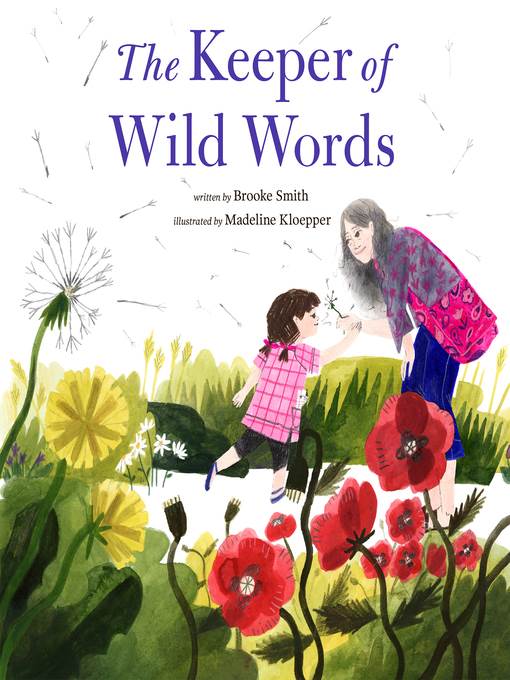
The Keeper of Wild Words
فرمت کتاب
ebook
تاریخ انتشار
2020
Lexile Score
650
Reading Level
2-3
نویسنده
Madeline Kloepperناشر
Chronicle Books LLCشابک
9781452183800
- اطلاعات
- نقد و بررسی
- دیدگاه کاربران
نقد و بررسی

January 1, 2020
When a girl visits her grandmother, a writer and "grand friend," she is seeking something special to share at show and tell on the first day of school. Before Brook can explain, Mimi expresses concern that certain words describing the natural world will disappear if someone doesn't care for and use them. (An author's note explains the author's motivation: She had read of the removal of 100 words about outdoor phenomena from the Oxford Junior Dictionary.) The duo sets out to search for and experience the 19 words on Mimi's list, from "acorn" and "buttercup" to "violet" and "willow." Kloepper's soft illustrations feature green and brown earth tones that frame the white, matte pages; bursts of red, purple, and other spot colors enliven the scenes. Both Mimi and Brook are depicted as white. The expedition is described in vivid language, organized as free verse in single sentences or short paragraphs. Key words are printed in color in a larger display type and capital letters. Sensory details allow the protagonist to hear, see, smell, taste, and hold the wild: " 'Quick! Make a wish!' said Mimi, / holding out a DANDELION, / fairy dust sitting on a stem. / 'Blow on it and the seeds will fly. / Your tiny wishes in the air.' " It's a day of wonder, with a touch of danger and a solution to Brook's quest. The last page forms an envelope for readers' own vocabulary collections. Sweet--and savory. (Picture book. 5-8)
COPYRIGHT(2020) Kirkus Reviews, ALL RIGHTS RESERVED.

January 27, 2020
Intended to memorialize the dozens of nature words—acorn, minnow, violet, wren—cut from a recent edition of The Oxford Junior Dictionary, Smith’s picture book follows an intergenerational duo on a hunt to find various words’ real-world signifiers. “Words disappear if we don’t share them when we talk,” Mimi says to her granddaughter Brook; dubbing her granddaughter “The Keeper of Wild Words,” Mimi invites her on a scavenger hunt (“Bunches of VIOLETS spread underfoot”). The list is long, and the two smell, taste, and observe their way through the outdoors. Digital and mixed-media illustrations in saturated tints by Kloepper show the duo in a garden and the woods beyond. Readers may not understand this story fully until they read the author’s note by Smith, strangely placed at the end of the book; until then, it scans more like a story of aging or dementia. Like The Lost Words before it, this may offer a springboard for debate about the comparative value of words. Ages 5–8.

February 1, 2020
K-Gr 3-Brook's grandmother, Mimi, needs help retrieving some of her favorite words before they disappear for good, wild words that she's known and cherished her whole life. "How do words disappear?" young Brook asks. Mimi answers that words disappear when they are forgotten by not being shared in speech or written in stories, and not read in books. Many of those words are found exclusively in nature; acorn, apricot, and beaver are followed later by violet, willow, and wren. The author was inspired to pen this tale after reading that the Oxford Junior Dictionary removed over 100 natural words from its pages. The story, paired with its gentle pastel illustrations, attempts to introduce these words to current readers. This is a touching, poetic, noble attempt, but lacks eye-catching pictures. While the buttercups and dandelions are striking, the silver minnows are barely noticeable, and Kloepper hardly captures the Monarch butterfly in all its glory as it dives by. The best use of a book like this is to take children out on a nature hunt to collect and/or identify said listed items. Using the large envelope at the end of the book is a good way to make a keepsake of the experience. VERDICT Peter H. Reynold's The Word Collector is a more creative celebration of words that will likely be appreciated by a young audience.-Etta Anton, Yeshiva of Central Queens, NY
Copyright 2020 School Library Journal, LLC Used with permission.




دیدگاه کاربران